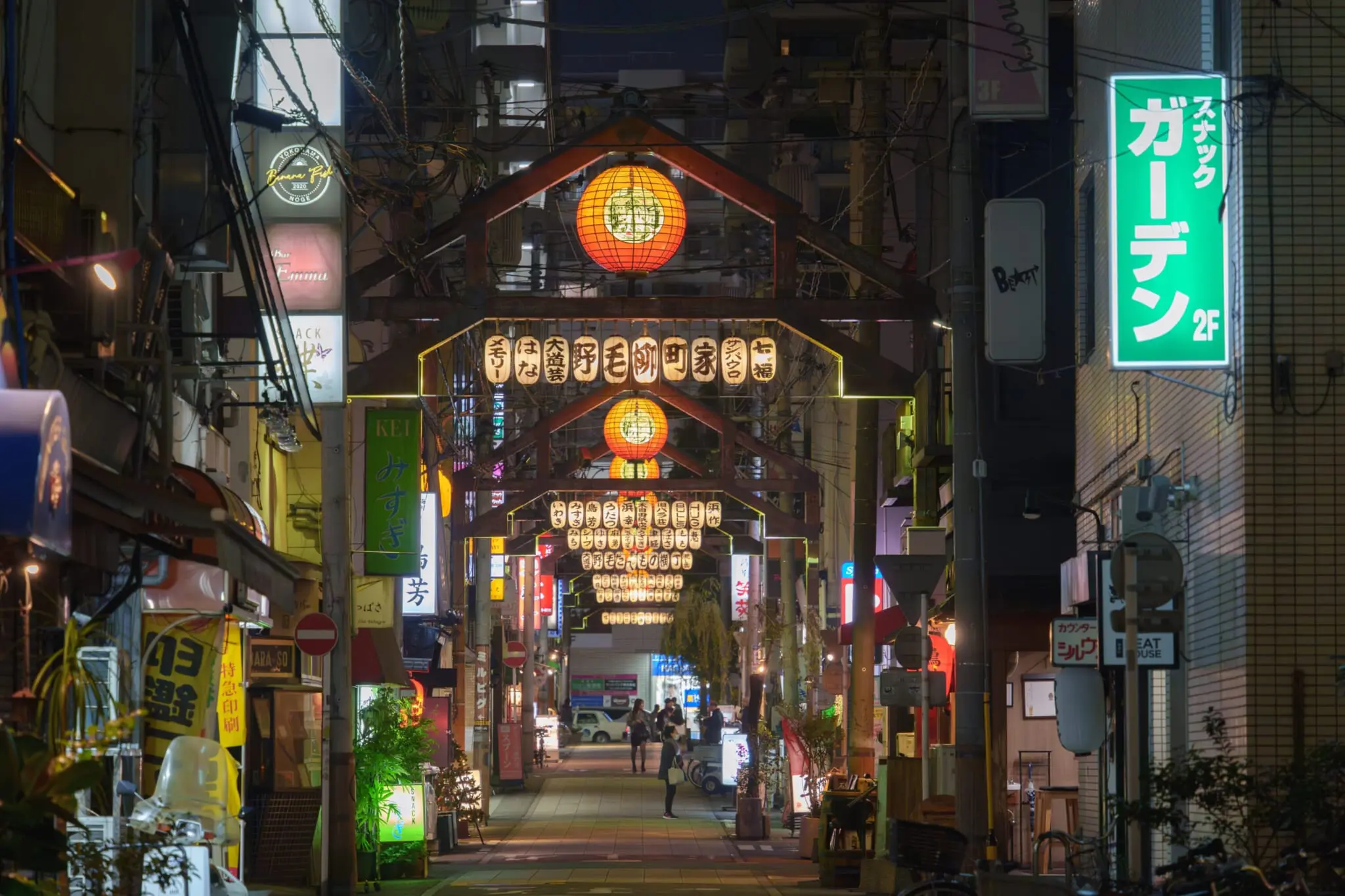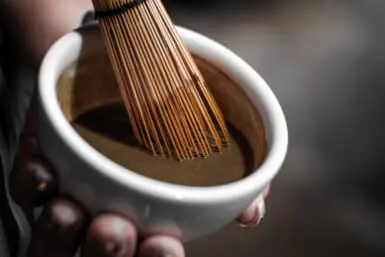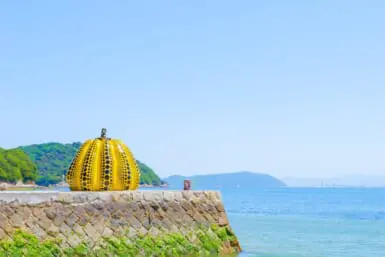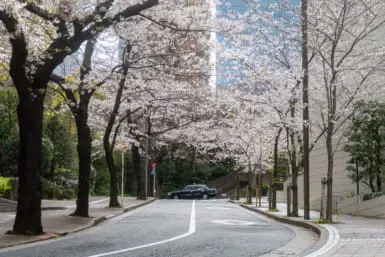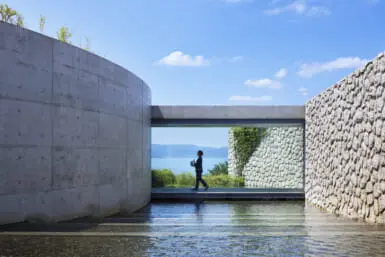Yokohama’s Noge district is a vibrant blend of history and energy, making it a true oasis for nightlife enthusiasts. Its hole-in-the-wall bars and bustling food alleys rival the charm of Shinjuku’s Golden Gai and Nippori’s Yanaka Ginza. It’s hard to believe the winding alleys and narrow shopfronts of Noge are a 15-minute walk away from the glistening and futuristic port district of Minato Mirai. Here are some of the best places to explore in and around Noge for a night out, featuring budget eats, stylish cocktail bars and the opportunity to sing a little karaoke before catching the last train.
Where To Drink in Noge
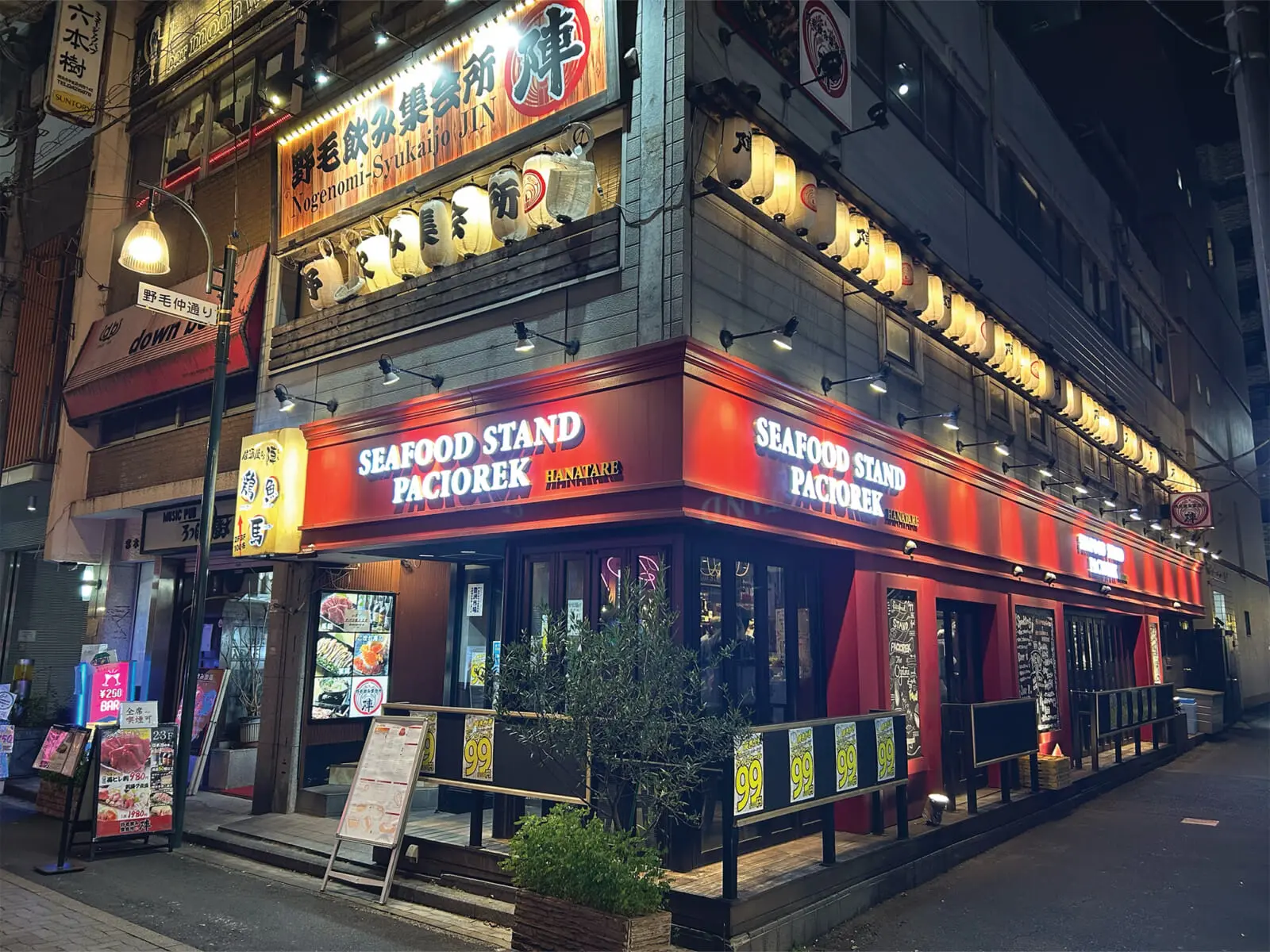
Seafood Stand Paciorek Hanatare
Izakaya
Seafood Stand Paciorek Hanatare
Seafood Stand Paciorek Hanatare is a popular spot serving excellent seafood and izakaya fare. Get there at 5 p.m. for happy hour oysters for only ¥100, and treat yourself to a glass of champagne that overflows into a wooden sake box. Other items on the menu include small plates to share, such as french fries and pasta.

Izakaya Ichinokura
Large groups seeking an authentic izakaya should look no further than Izakaya Ichinokura. Serving fresh fish and a range of sake, it’s the perfect choice to kick off a night exploring Noge. The venue has horigotatsu (sunken traditional seating) for groups up to 12, as well as private rooms. Banquet courses are also available, which is an enticing option for parties who want to eat and drink freely without making choices off the menu. Dishes range from tempura to gorgeously presented yakitori platters.

Noge Bistro Zip Terrace
If waterfront dining sounds attractive, look no further than Noge Bistro Zip Terrace. Perched on the edge of the Ookagawa River, diners are greeted by a large wooden balcony with table seating and open windows. The menu is true Japanese bistro style, ranging from pizza to specialty potato salad. The drink selection is vast, promising options for everyone, whether it be a highball or a glass of red wine.

Uchida Biyori
Bars
Uchida Biyori
Yokohama locals flock to Uchida Biyori for a curated selection of Japanese craft beers and sake. A cozy space with both counter seating and small tables, the sleek lighting and chrome finish is simultaneously casual and refined. Uchida Biyori is also famous for its fresh lemon sours with a salted rim, similar to a margarita. The sake and craft beer menu changes daily and often has seasonal options from popular Japanese breweries as well as smaller, more experimental sellers. The homemade potato salad is also recommended.
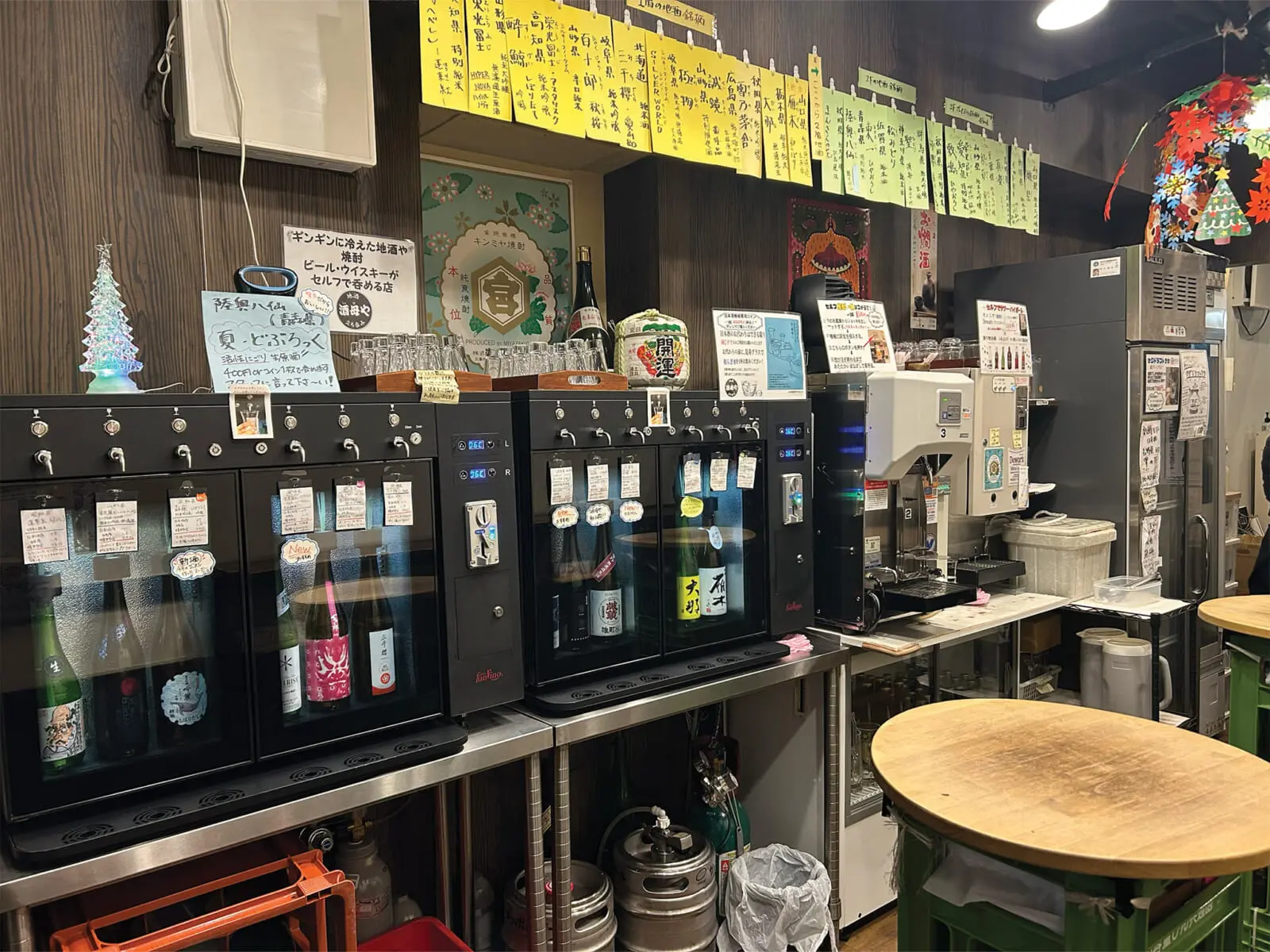
Noge Shuboya
Noge Shuboya is a sake lover’s dream. Located down the region’s lively walking street, it offers over 20 types of specialty sake from all over Japan for just ¥500. Shuboya operates using a token system, where you pour your own sake by inserting a coin into the self-serve sake vending machine. This allows diners to take their time to study the different bottles, and chat with the staff about their recommendations. Shuboya also offers small snacks perfect for pairing with sake, such as dried firefly squid and smoked mixed nuts.
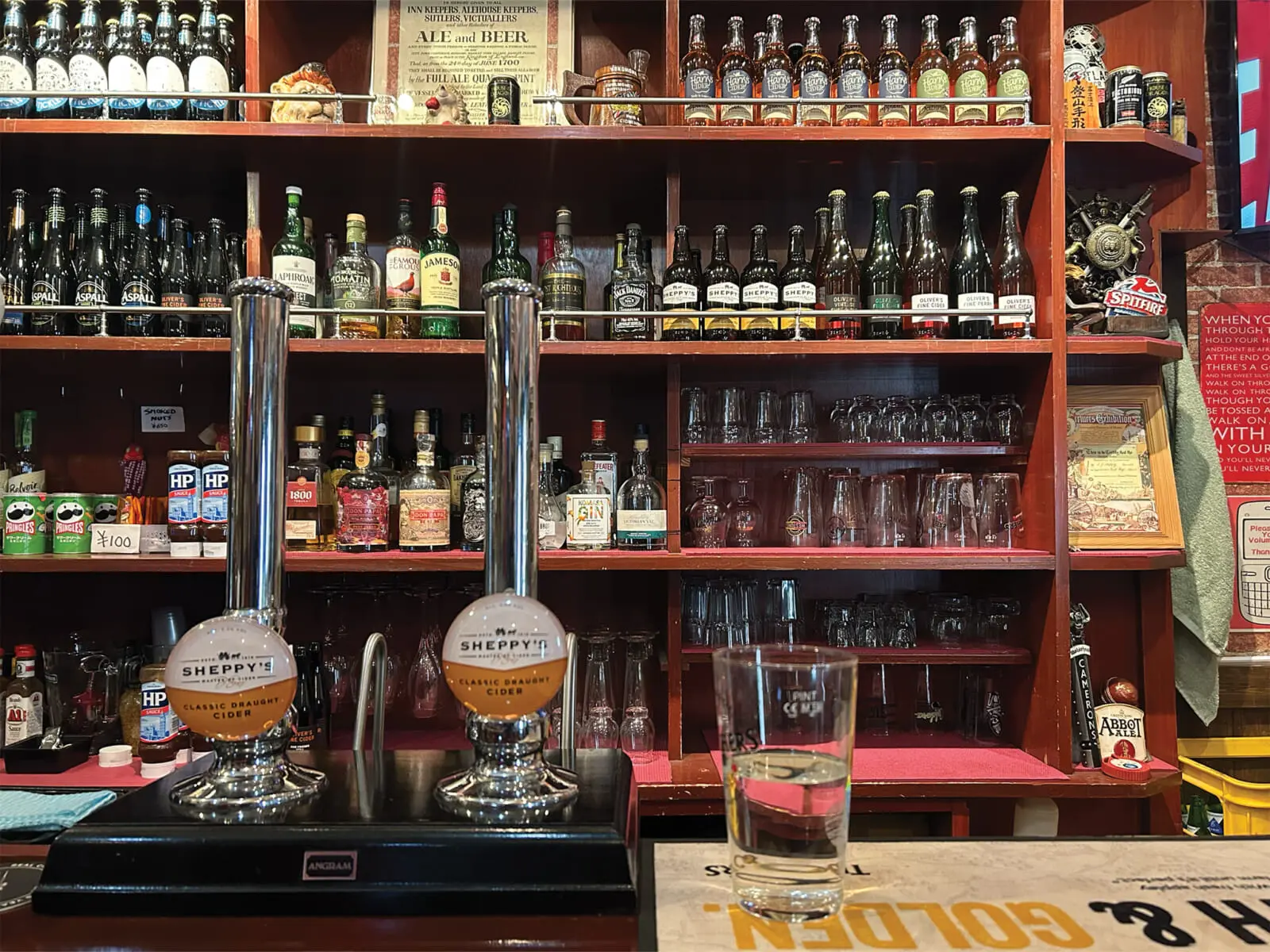
Full Monty British Pub & Cider House
It would be a disservice to neglect Full Monty British Pub & Cider House. Opened in 2005, Full Monty claims to be Yokohama’s oldest cider house, and fulfills all expectations as a reliable British Pub. The fish and chips are very popular, as are the imperial pints of Guinness and Strongbow cider. With a large Union Jack flag at the door, it’s tough to miss Full Monty and is worth stopping by before going on a Noge bar crawl.
Hidden Gems
Southbound
When you smell Southbound’s fried hush puppies and Virginia peanuts, you just may forget you’re in Japan. Southbound specializes in a very niche market of craft beers imported from the Mid-Atlantic region of the United States. Technically a bottle shop, customers can choose from a range of specialty canned beers or from one of the imported brews on tap.
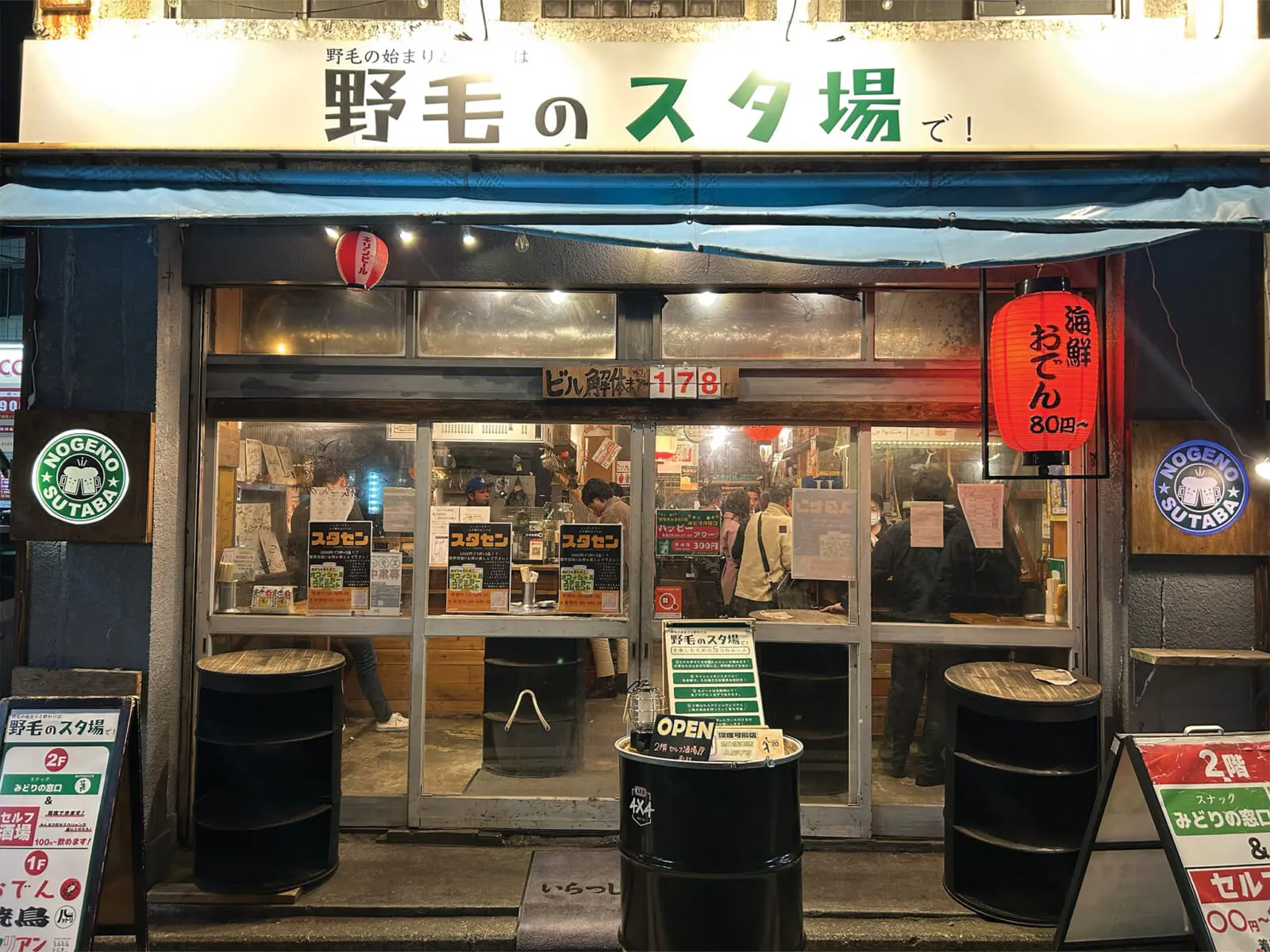
Noge no Suta Bar
There is a calendar outside Noge no Suta Bar that counts down the number of days until the building’s demolition and the bar’s imminent closure. While this may sound grim, it has become a highly successful business model and neighborhood institution. It is separated into small tachinomi (standing bars), allowing customers to roam freely across the floors and between the shops. Noge no Suta Bar is loved by locals. On the second floor, customers can enjoy Jenga, karaoke and self-serve highballs. Many hope it will remain open even after the countdown reaches zero.
Alfredo Modern Cocktails
Tucked away on the fourth floor of a building on a small side street, cocktail lovers may think they’re in swanky Tokyo as they step into Alfredo Modern Cocktails. This cozy bar specializes in concoctions tailored to the tastes of customers. The menu is designed chronologically, providing history buffs contextual background to drinks such as “Meriton Latroon’s Bantam Punch,” one of the oldest drinks loved by British sailors, to the popular Sazerac of the cocktail Golden Age. Each drink is beautifully presented and in harmony with the timeless ambiance. Weekend reservations are a must and can be made via the bar’s Instagram page.
Fueling the Fun: Late-Night Eats in Noge
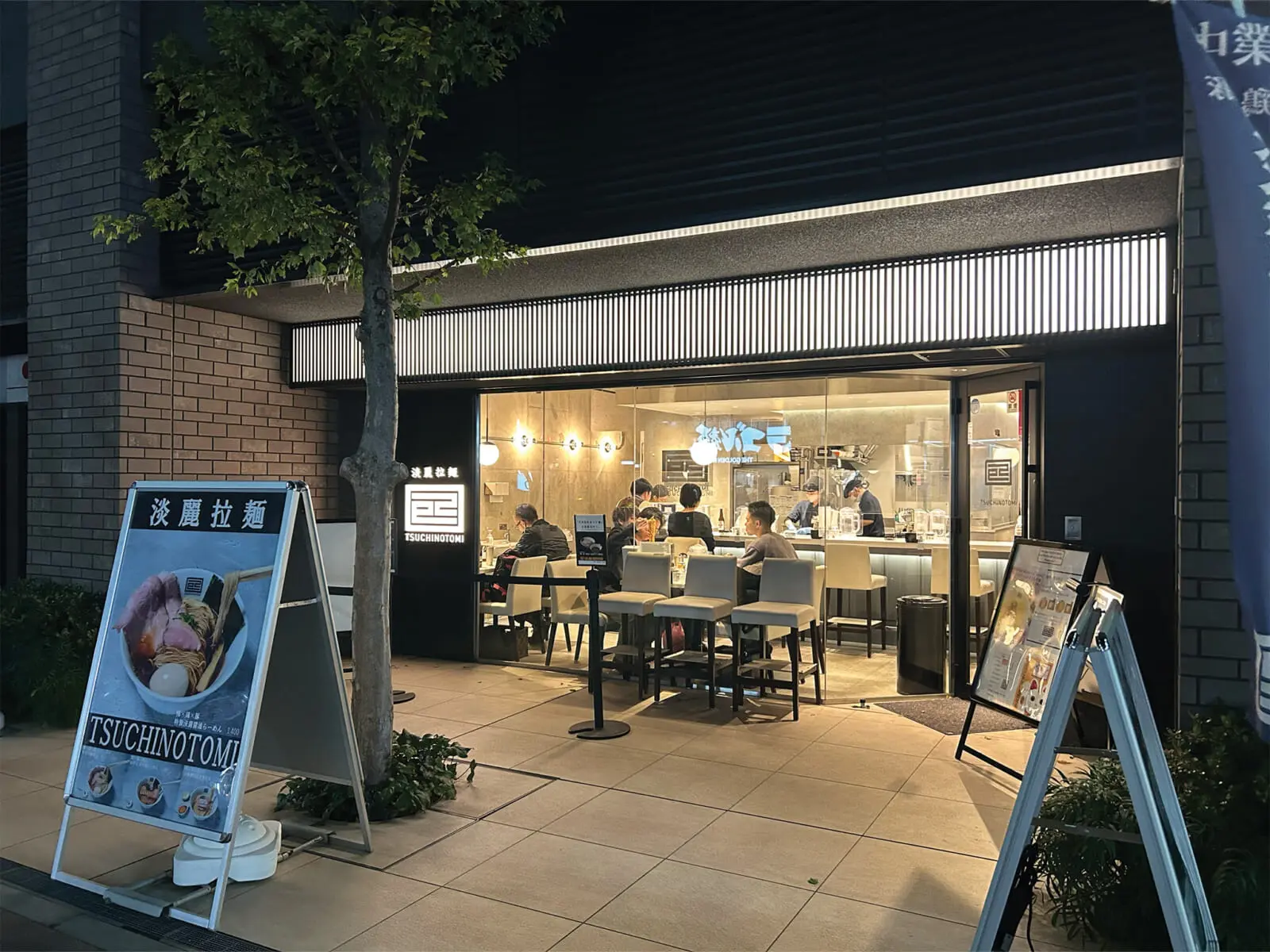
Ramen Tsuchinotomi
Ramen
Ramen Tsuchinotomi
Ramen Tsuchinotomi makes a delicious duck ramen using a rich soy sauce base that is sure to please ramen lovers looking for a refined experience. The noodles are thin and firm, and served with a side of citrus chili paste. It is recommended to order extra toppings, as the freshly seared duck breast is addictive. Tsuchinotomi’s salt ramen uses truffle paste and shiitake mushrooms, which provide a rich umami element to the delicate soup. It takes cashless payment and has an English menu.
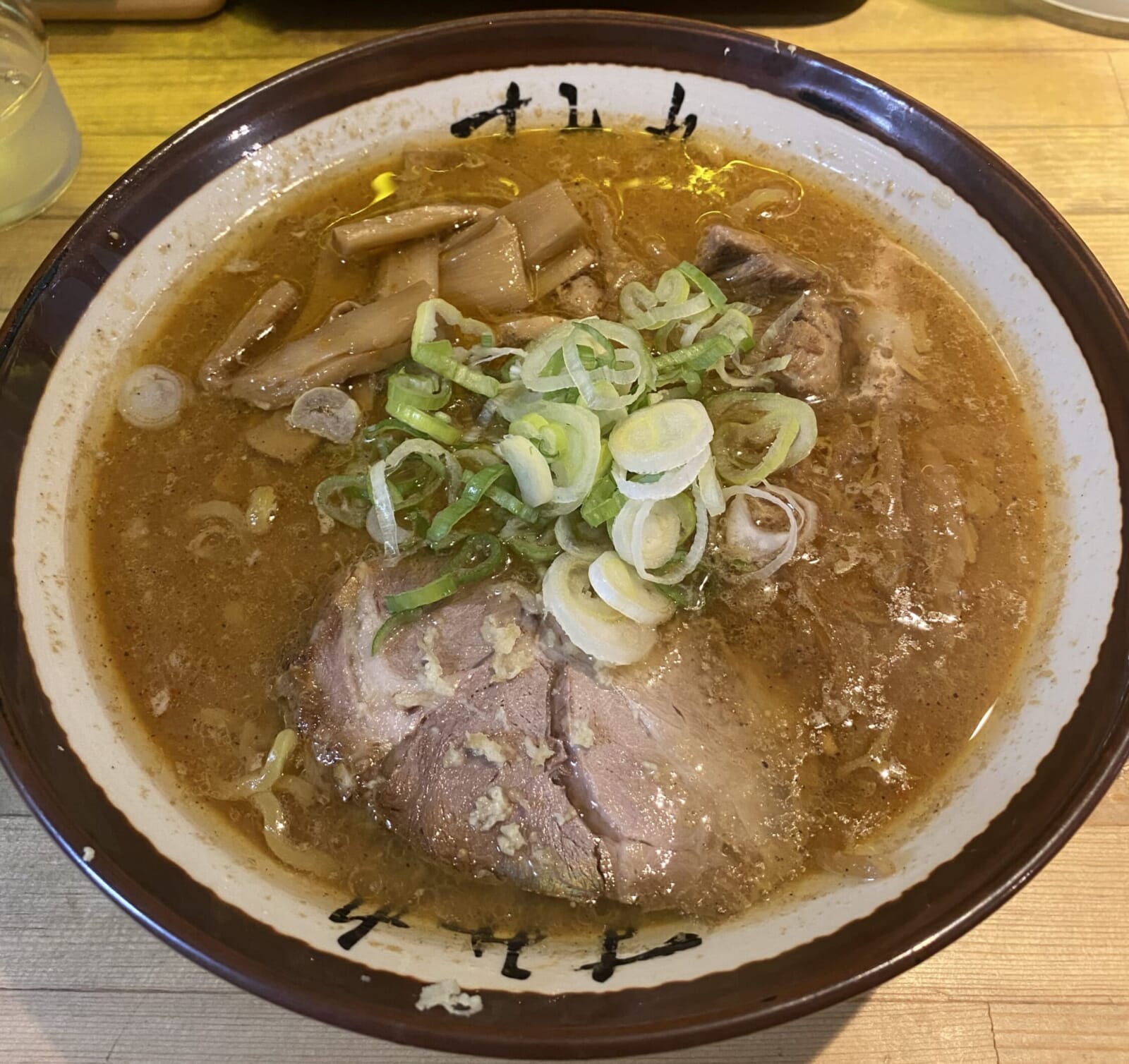
Sumire Yokohamaten
Sumire’s original location is in Sapporo and introduced Japan to the classic style of heavy, robust miso ramen in 1964. Fortunately, you can get your fix in Noge, so you don’t have to trek all the way to the country’s northernmost prefecture. Sumire’s miso ramen is full of ginger and has chewy, wavy noodles. A popular side dish is the pickled daikon, which has a pleasant tangy sourness and delicious crunch to complement your miso ramen. Sumire takes cashless payment and has an English menu.

Torino
Yakitori
Torino
Torino’s fusion can be seen in the name of the shop alone, a pun on tori (chicken) and the Italian city of Torino. The course menu takes traditional yakitori items and gives them an Italian twist. Popular dishes include the grilled chicken breast with mozzarella and basil and the meatballs topped with red sauce and Parmesan, served on a toasted baguette. The wine selection is carefully curated to pair with the yakitori, and the carbonara makes for an excellent finishing dish to top off your meal.
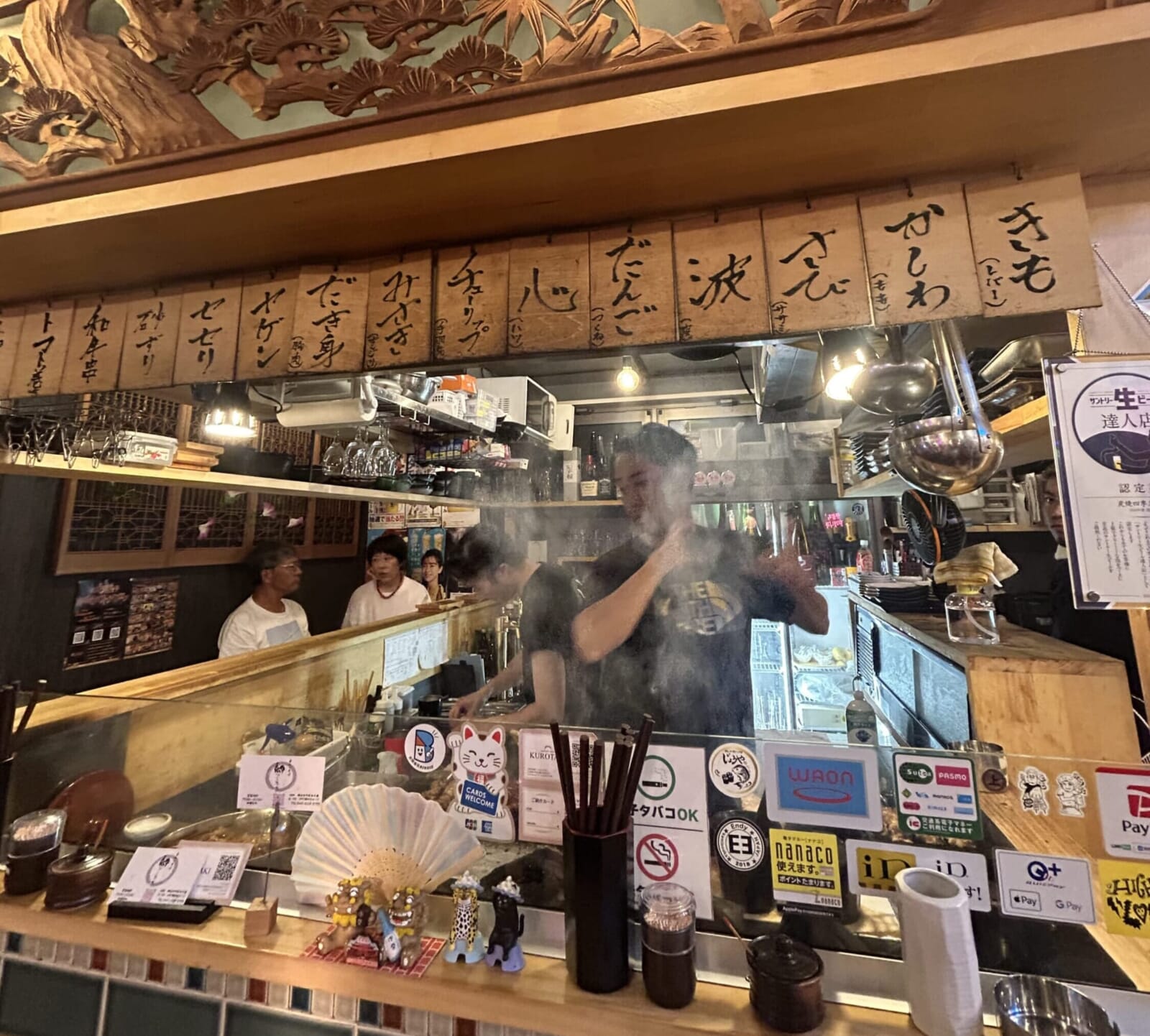
Torishirube
Charcoal grilled yakitori and premium sake are signatures of Torishirube. Patrons sit around a small counter and watch their food being cooked to order. Yakitori is served one at a time, so each bite is piping hot and fresh. The prices are very reasonable, with a five-piece yakitori set for ¥1,000. Torishirube uses high quality chicken, and it is recommended to try both the salt and sauce style of yakitori. The sake on offer is equally divine, and is sourced from popular breweries around the country. It’s worth arriving there early, as the seats tend to fill up quickly.
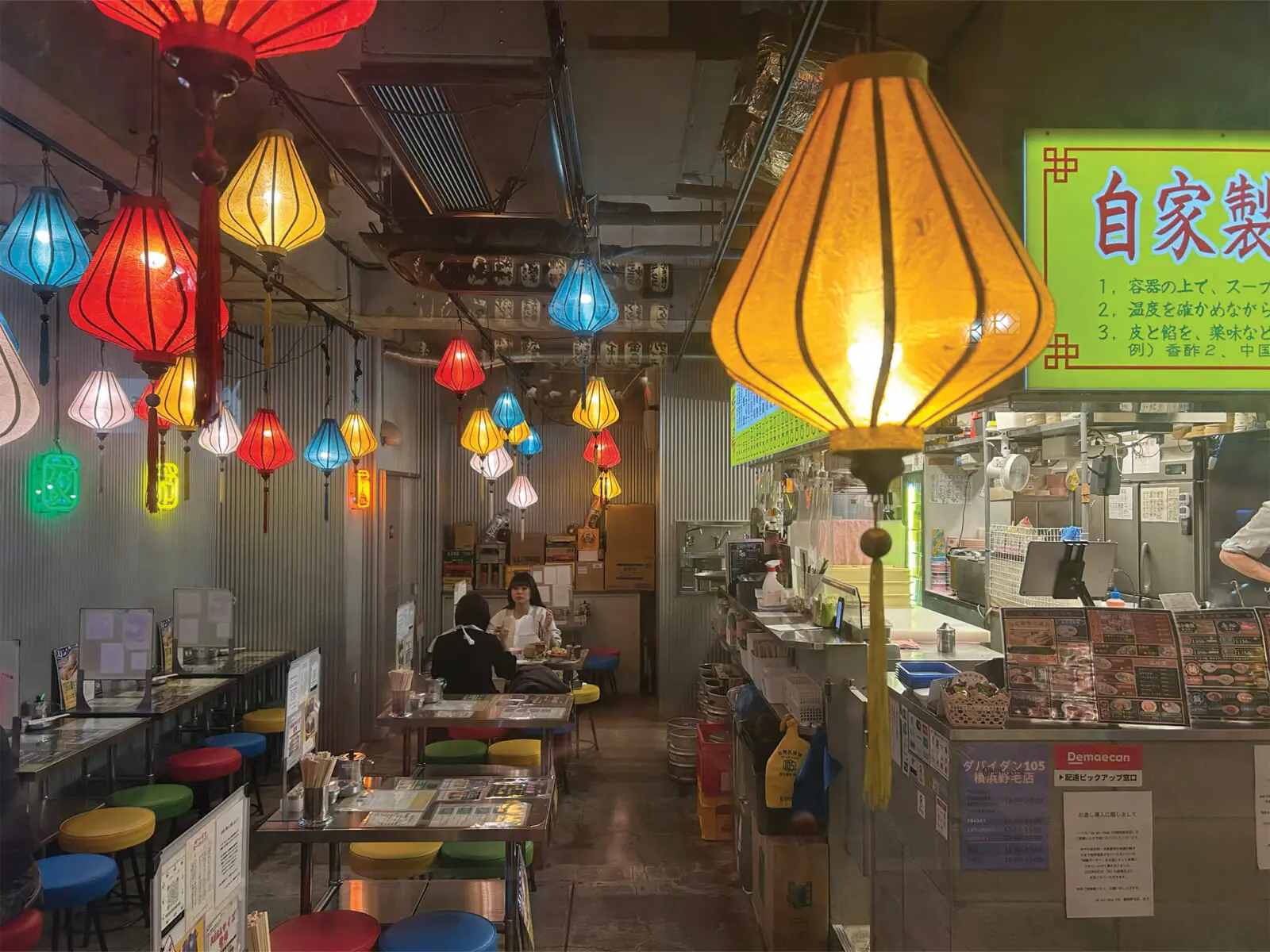
Da Pai Dang 105
Other Late-Night Bites
Da Pai Dang 105
If crispy gyoza and an ice-cold lemon sour sound like the ideal way to end your night, head to Da Pai Dang 105. The interior evokes a Taiwanese food stall ambiance, with hanging lanterns, metal tables and colored plastic stools. Pickled mustard greens are served when you arrive, and each crispy fried xiaolongbao begs to be dipped in the house chili sauce. Da Pai Dang 105 also makes authentic Taiwanese fried chicken with a healthy dose of numbing Sichuan pepper.
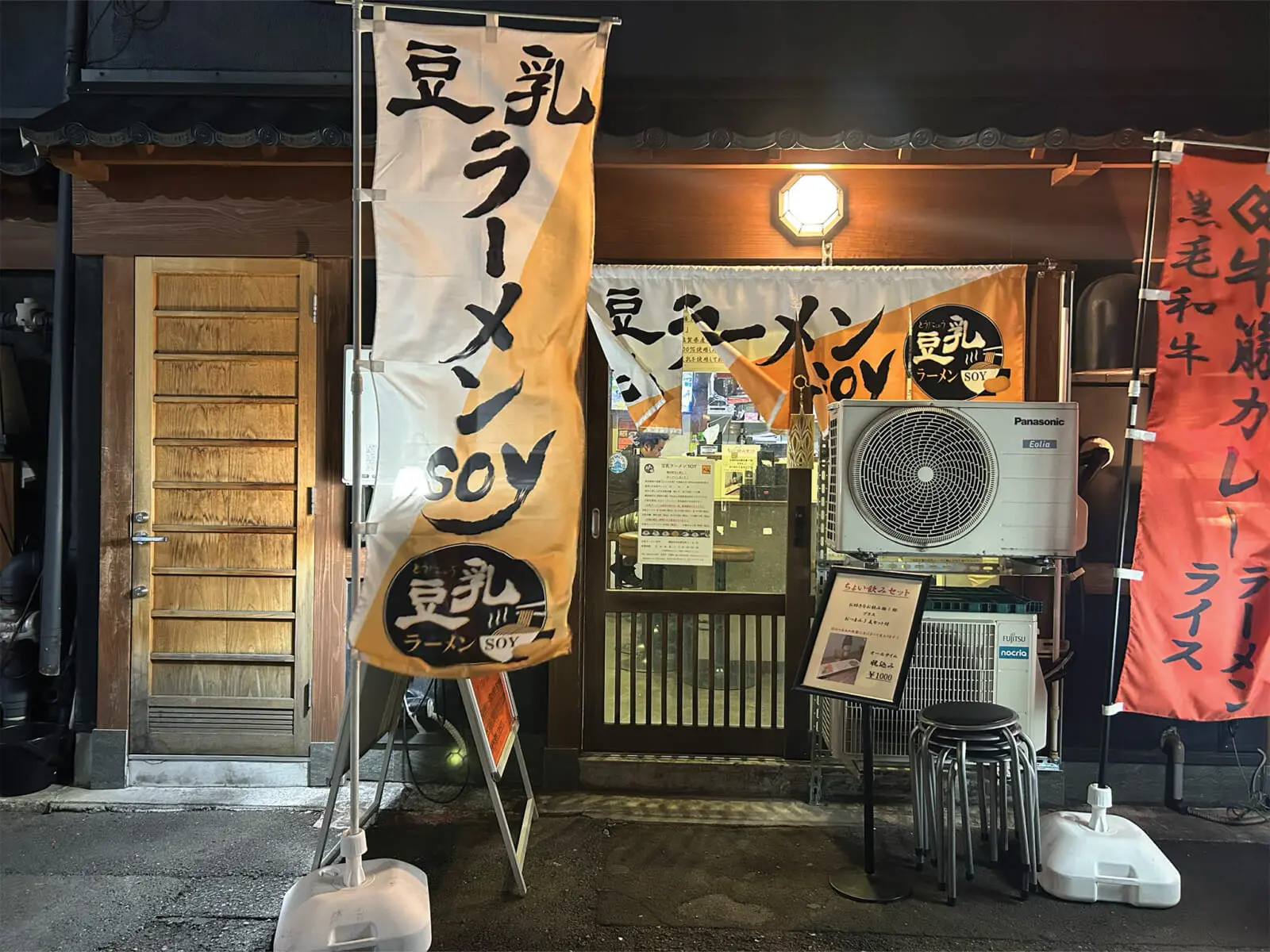
Tonyu Ramen Soy
It doesn’t get much better than eating wagyu beef curry at 1 a.m. Tonyu Ramen Soy is owned by a nearby popular yakiniku restaurant, so the beef served is top-notch. For ¥900, hungry night owls receive a curry bowl made with A5 wagyu beef tendon. It is mild and slightly sweet, with deep undertones of garlic and miso. The cheese risotto is also a popular item at Tonyu Ramen Soy, which can only be enjoyed if a customer orders the soy milk ramen first. Then, the staff takes the remaining soup and cooks it again, this time adding white rice and incorporating spices, freshly shredded cheese and garlic.
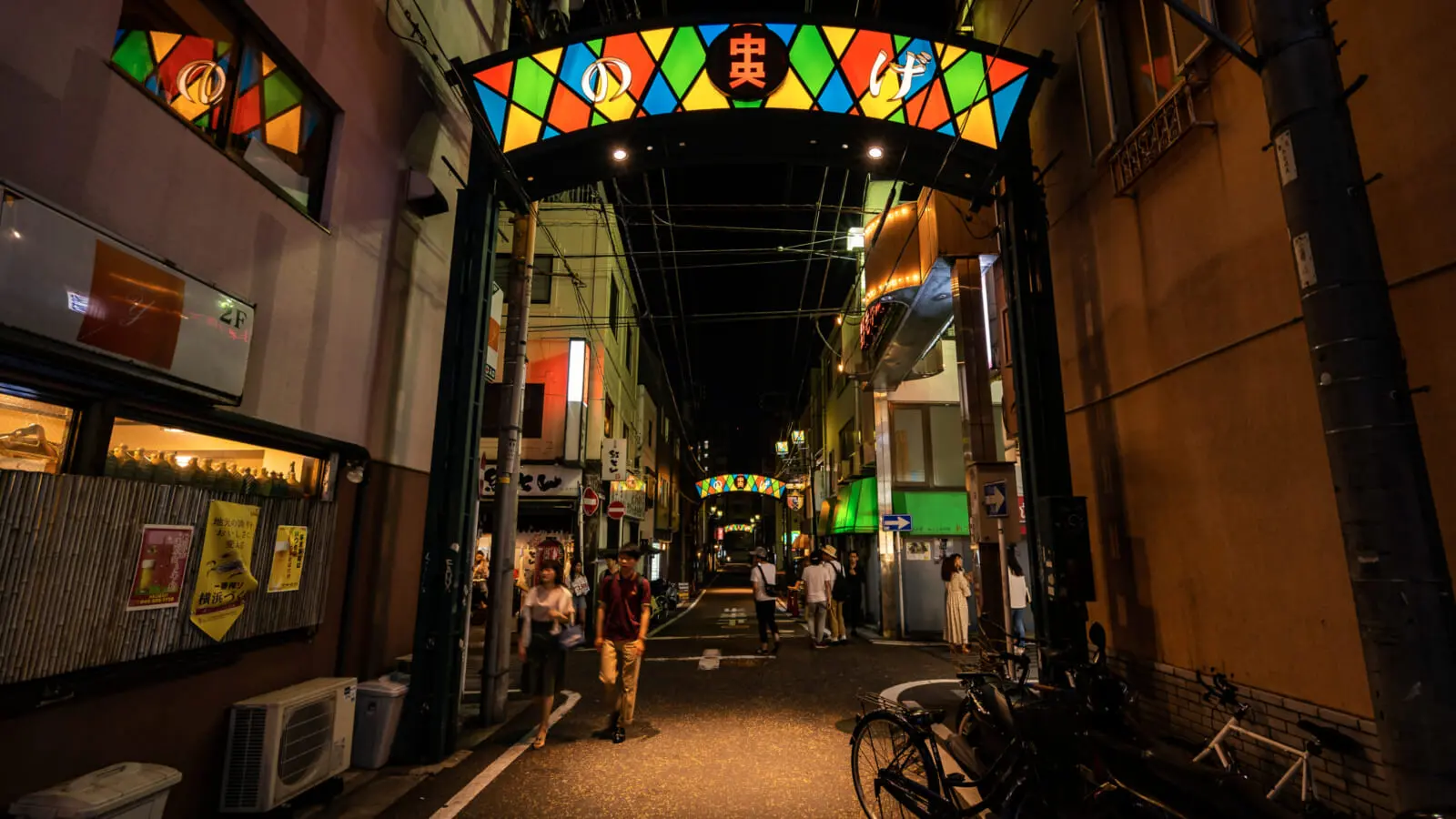
Tips for Navigating Noge at Night
Noge is just a short walk from both Sakuragicho and Hinodecho stations. Many venues have limited seating and are frequented by a loyal, local crowd. Foreigners visiting Noge for the first time should consider traveling in small groups to not overburden smaller establishments. Also, English menus are more limited in Noge.
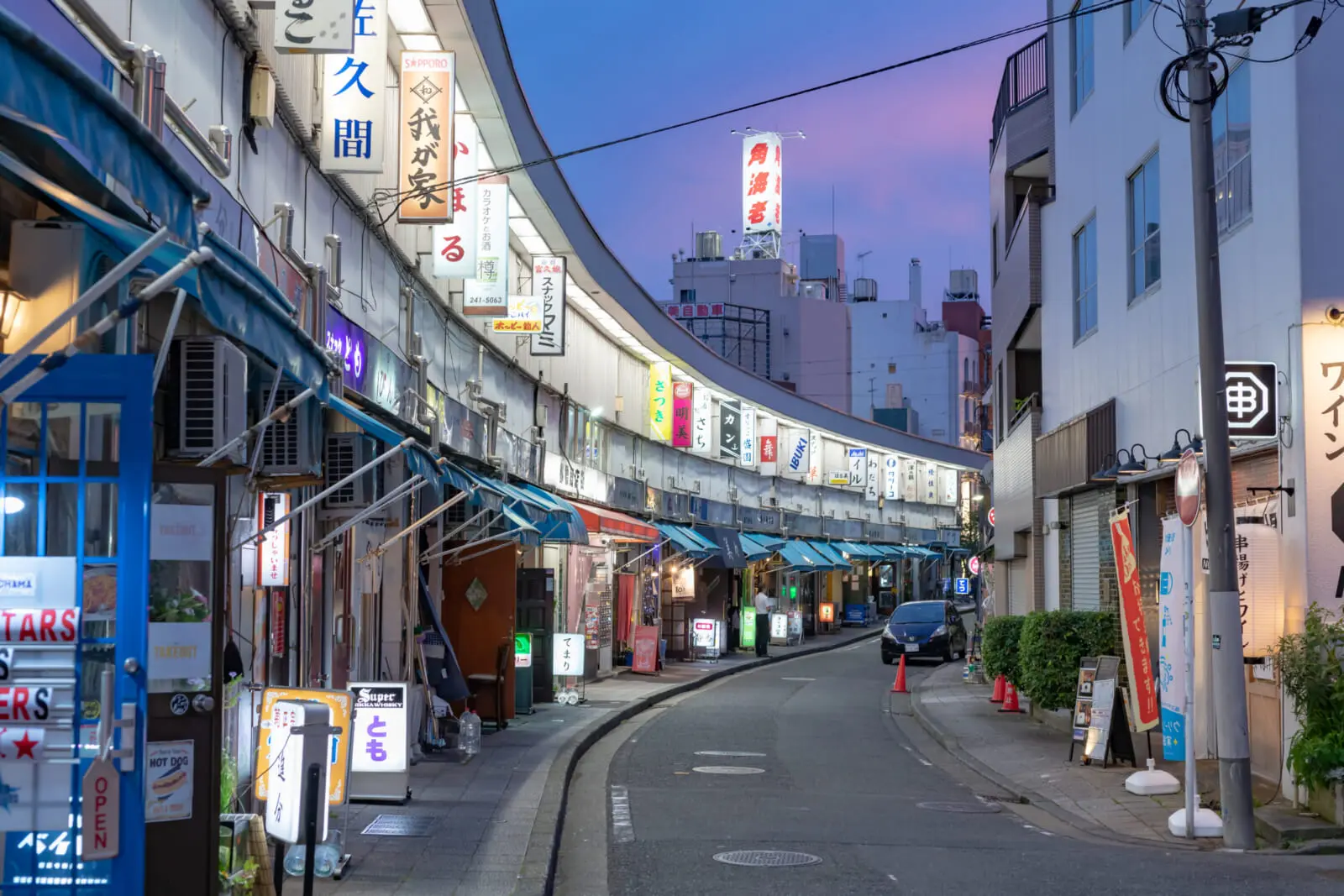
Explore the Hidden Alleys
Occasionally, Noge can get quite crowded. In this case, the best way to experience the nightlife is on foot and at one of its many yokocho (alleyways). Pio City is a popular place for Hoppy (a traditional Japanese alcoholic beverage) and is a historic venue of classic storefronts and architecture. Located beneath Sakuragicho Station, it’s a fun and adventurous way to kick off your evening in Noge.
Yokohama Dreamland is also nearby, which has a labyrinth of small shops serving fresh fish from the Yokohama fish market and izakaya fare like roasted ginkgo nuts and raw oysters as big as your fist. And perhaps the most classic of the Noge yokocho is Noge Tabemono Yokocho, or “Noge Food Street.” Pedestrians often miss this hidden gem as the doorway to the alley is tucked between two concrete walls and hidden behind a weathered pair of wooden swinging doors. Once you find the entrance, though, you’ll be treated to a narrow passageway of food stalls, karaoke rooms and intimate bars.

Ookagawa River
There’s no better way to walk off your indulgences than a stroll along the scenic Ookagawa River. Begin at Miyakobashi Shopping Street, also known as Harmonica Yokocho. This two-story building of over 60 small bars was built in 1964 and is part of the Yokohama Heritage Association. Wander along the pedestrian path, savoring the sights and sounds of Noge at night, and either finish at Koganecho Station — home to a burgeoning artist’s scene — or cross the river to loop back towards Sakuragicho.

